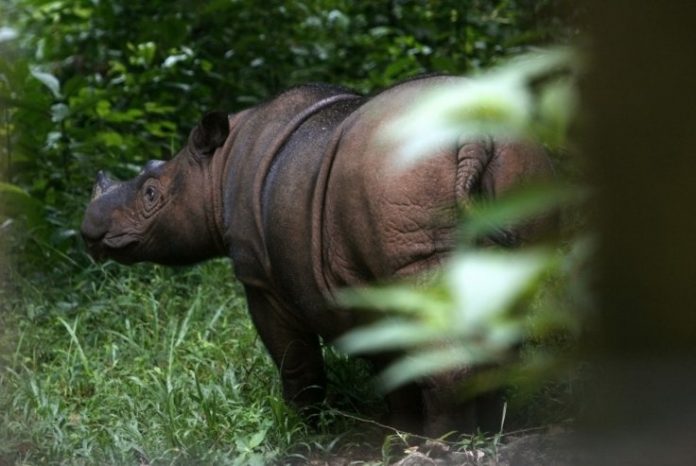Rhinoceros lead tough lives. Their numbers in the wild are dwindling close to extinction because of mass poaching for years to gather their tusks which supposedly hold medicinal value.
An international team of researchers has sequenced and analysed the first Sumatran rhino genome from a sample belonging to a male animal, Ipuh, which lived at Ohio’s Cincinnati Zoo, in the US, for 22 years until his death in 2013.
“Our genome sequence data revealed that the Pleistocene was a rollercoaster ride for Sumatran rhinoceros populations,” says geneticist Herman Mays of West Virginia’s Marshall University.
“This species has been well on its way to extinction for a very long time,” adds Terri Roth, from the Centre for Conservation and Research of Endangered Wildlife at the Cincinnati Zoo.
The new insight into rhino demographic history is useful for placing the current population status of the species into a broader ecological and evolutionary context, the researchers say.
Today, the World Wildlife Fund estimates fewer that 100 Sumatran rhinos remain in the wild. Its population peaked at a time when fossil evidence shows an invasion of continental mammals into Sundaland, a biogeographical region of south-eastern Asia, around 900,000 years ago, according to the researchers. By about 12,000 years ago – the end of the Pleistocene – many large mammals had suffered, and Sumatran rhinos were no exception.
“Their population bottomed out and never showed signs of recovery,” Mays says.
Rising sea levels submerged the Sundaland corridor, and land bridges connecting the islands of Borneo, Java, and Sumatra to the Malay Peninsula and mainland Asia disappeared into the ocean. Most likely as a result, the researchers say, the population of rhinos shrank as suitable habitat became increasingly fragmented.
Since then, at time, populations have dwindled further because of habitat loss and hunting.
The scientists used a technique called pairwise sequential Markovian coalescent (PSMC) analysis, which uses the genome sequence of a single individual to estimate demographic history covering a timespan of thousands of generations.
The team combined PSMC with ecological niche modeling to understand how changes in population size were related to climate change in the past.
The researchers estimate that the Sumatran rhinoceros population peaked at an estimated effective population of about 57,800 individuals about 950,000 years ago. (Effective population size is the size of a population consistent with optimum genetic diversity. It gives an estimate of the number of reproducing individuals at any given time.)
By 9000 years ago, the genome evidence suggests, the effective population size was reduced to only about 700 animals. The findings suggest that climate change in the distant past reduced the genetic diversity of Sumatran rhinos, leaving them even more vulnerable to later pressures from human activity.
The rhino Ipuh, named for the locality on the island of Sumatra where he was originally collected, fathered two male offspring that live at the Sumatran Rhino Sanctuary in Sumatra. One of them has sired two calves.
“The Sumatran rhinoceros species is hanging on by a thread,” Roth says. “We need to do more to save it.”















